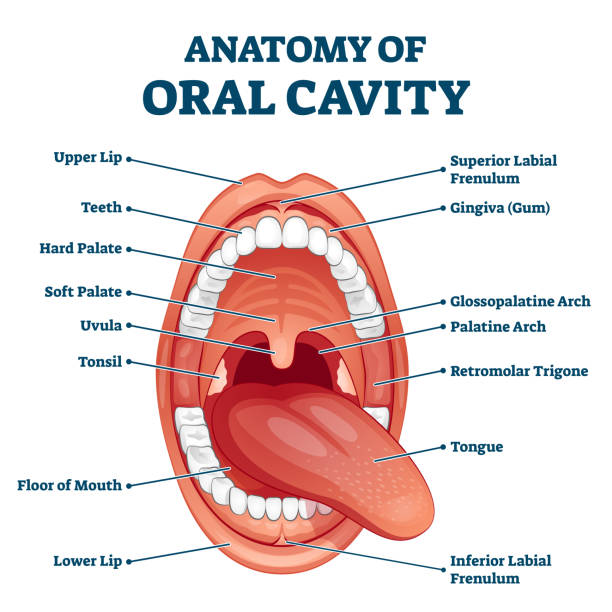
Oral Cavity: Its Importance, Causes of Issues, Symptoms, Diagnosis, Treatments, and Prevention
The oral cavity, commonly referred to as the mouth, plays a crucial role in daily life. It serves as the gateway to the digestive and respiratory systems and is vital for chewing, speaking, and maintaining overall health. Comprising the lips, tongue, gums, teeth, cheeks, roof (palate), and floor of the mouth, this small yet complex system requires care and attention to function optimally. Let’s delve into the causes, symptoms, diagnosis, treatments, and prevention of common oral cavity issues.
Several factors can lead to problems in the oral cavity, including:
- Poor Oral Hygiene: Neglecting regular brushing and flossing allows plaque and tartar buildup, leading to tooth decay and gum disease.
- Dietary Habits: High consumption of sugary foods and drinks increases the risk of cavities and bacterial growth.
- Tobacco Use: Smoking or chewing tobacco can cause oral cancer, gum disease, and staining of teeth.
- Infections: Viral, bacterial, or fungal infections such as herpes simplex, streptococcus, or candidiasis (oral thrush) can affect the mouth.
- Underlying Medical Conditions: Conditions like diabetes, vitamin deficiencies, or immune system disorders can compromise oral health.
Symptoms of Oral Cavity Problems
Recognizing early signs of oral health issues is key to preventing severe complications. Common symptoms include:
- Tooth Pain or Sensitivity: A common indicator of decay, cavities, or exposed tooth roots.
- Bad Breath (Halitosis): Persistent bad breath may suggest gum disease or infections.
- Bleeding or Swollen Gums: Often a sign of gingivitis or periodontal disease.
- Mouth Sores or Ulcers: Can result from infections, trauma, or oral cancer.
- Loose Teeth: Indicates advanced gum disease or bone loss around teeth.
Diagnosis of Oral Cavity Issues
A proper diagnosis by a dental professional is essential to address oral cavity problems effectively. Diagnostic methods include:
- Visual Examination: Dentists inspect the mouth for signs of decay, infections, or abnormalities.
- X-rays: These help identify hidden cavities, bone loss, or impacted teeth.
- Biopsy: For suspicious lesions, a tissue sample may be taken to check for oral cancer.
- Saliva Tests: Useful for detecting bacterial levels and overall oral health status.
- Probing: Dentists measure the depth of gum pockets to assess gum health.
Treatments for Oral Cavity Issues
Depending on the problem, various treatments are available:
- Professional Cleaning: Scaling and polishing remove plaque, tartar, and surface stains.
- Fillings and Crowns: Restore damaged or decayed teeth.
- Antibiotics or Antifungals: Treat bacterial or fungal infections in the mouth.
- Root Canal Therapy: For infected tooth pulp, saving the tooth structure.
- Oral Surgery: Includes tooth extraction, gum grafting, or removal of oral cancerous lesions.
Prevention of Oral Cavity Problems
Maintaining good oral hygiene and adopting healthy habits can prevent most oral health issues. Key preventive measures include:
- Daily Oral Hygiene: Brush teeth twice a day with fluoride toothpaste and floss daily.
- Regular Dental Visits: Schedule check-ups and cleanings every six months.
- Healthy Diet: Limit sugary foods and drinks; consume nutrient-rich foods for healthy teeth and gums.
- Avoid Tobacco and Alcohol: Reduce the risk of oral cancer and other oral health problems.
- Use Mouthguards: Protect teeth during sports or from grinding at night.
Conclusion
The oral cavity is more than just a functional part of the body; it’s a reflection of overall health. Ignoring oral health can lead to serious complications, including systemic diseases. By understanding the causes, recognizing symptoms early, seeking timely diagnosis, and adhering to proper treatments and preventive practices, individuals can ensure a healthy mouth and a better quality of life. Remember, a healthy smile starts with consistent care and attention to your oral cavity.



